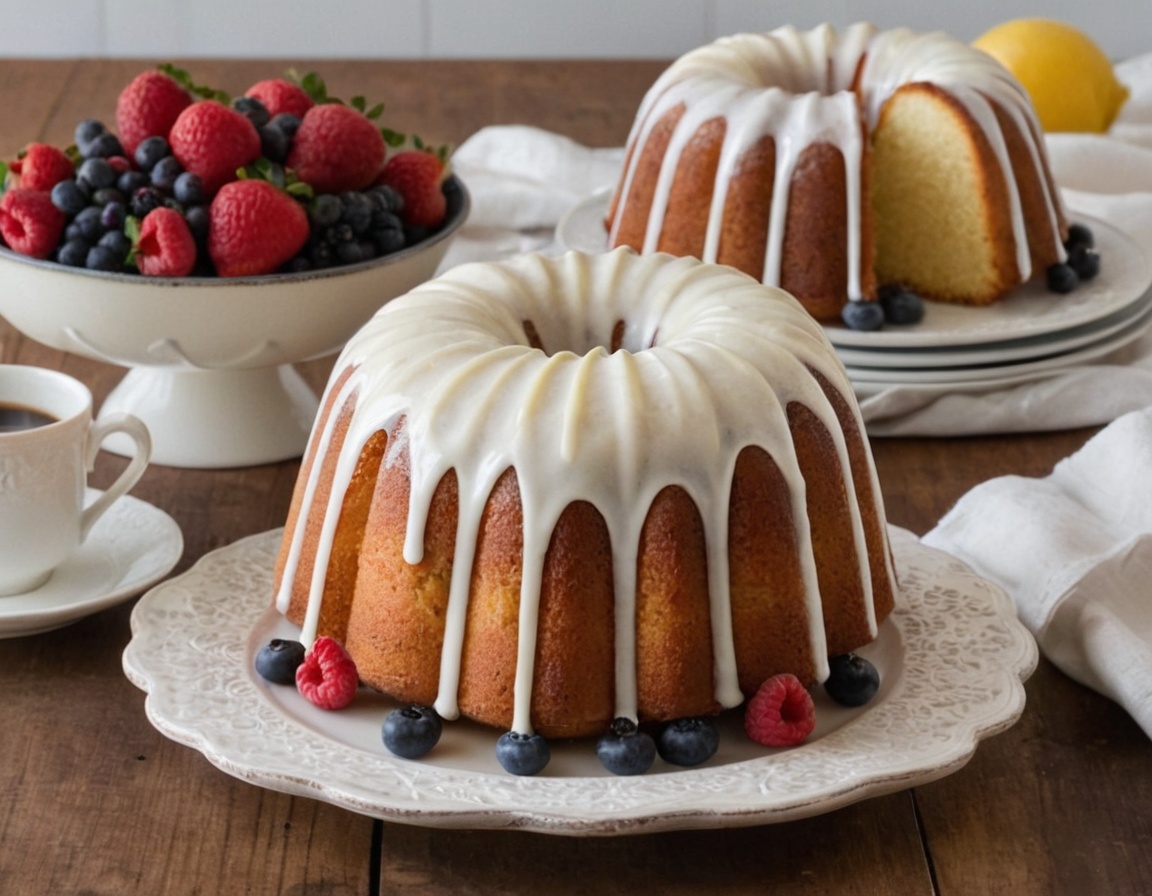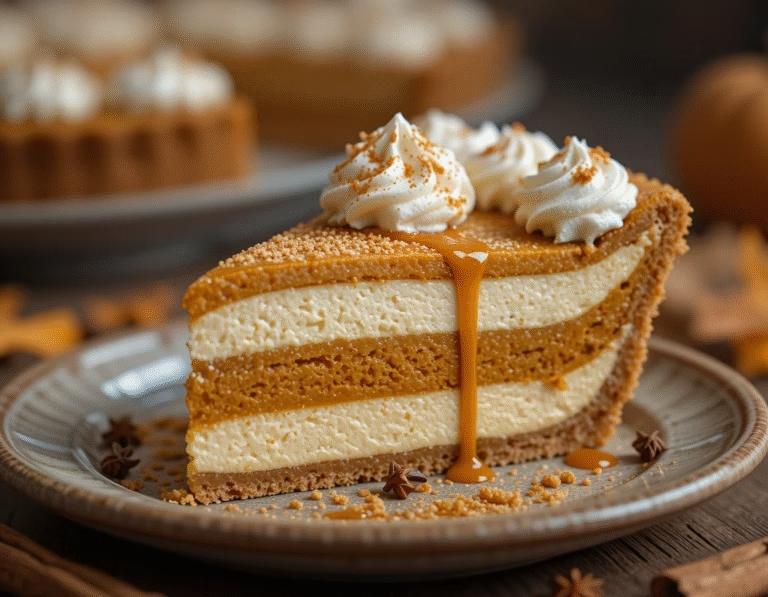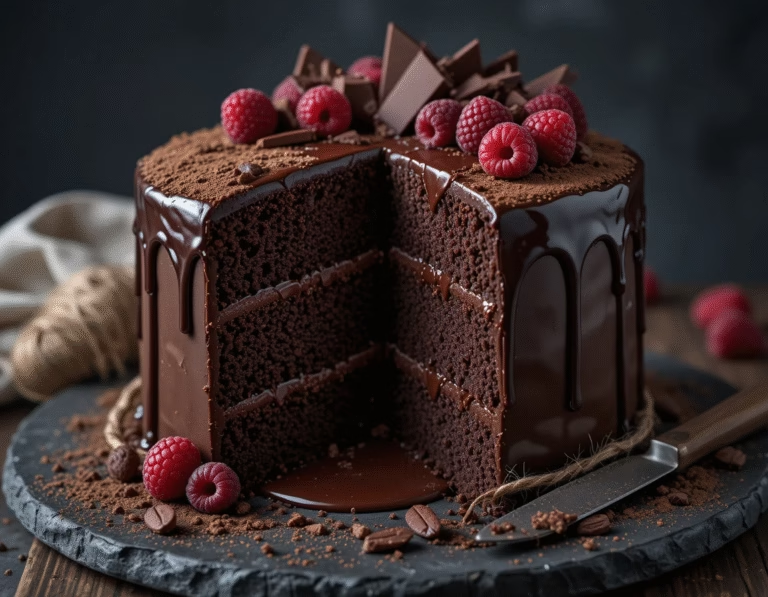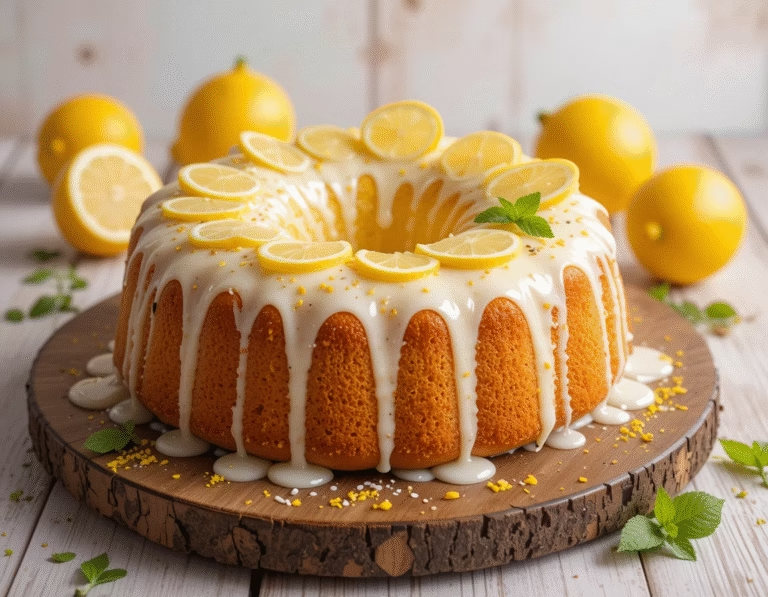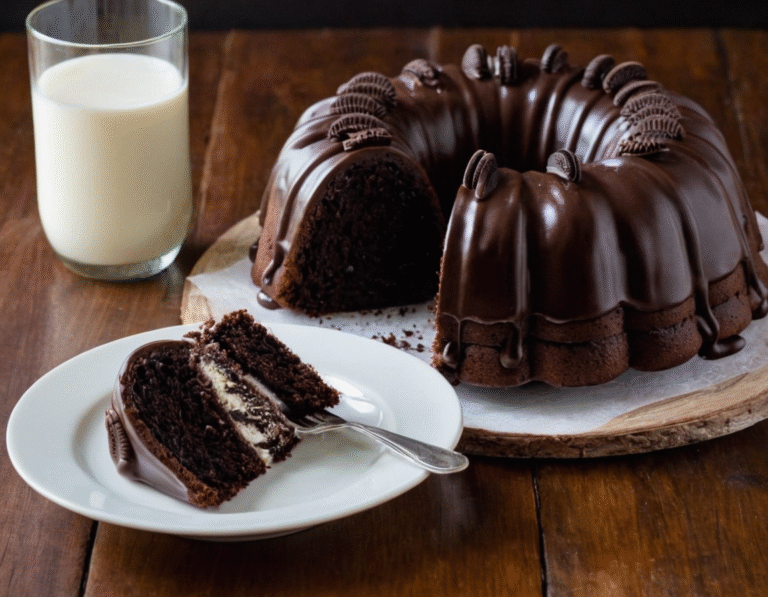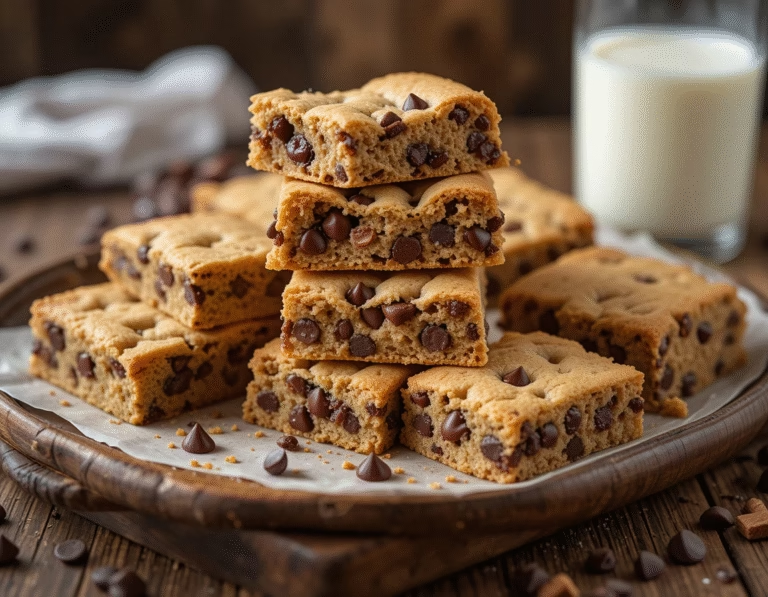How To Make Classic Buttermilk Pound Cake Recipe
Few desserts capture the essence of Southern comfort quite like a buttermilk pound cake. With its tender crumb, rich buttery flavor, and beautifully golden crust, this classic cake has earned its place as a timeless staple in American baking. Whether you’re enjoying a slice with your morning coffee or serving it as the centerpiece at a family gathering, a well-made pound cake delivers pure, nostalgic satisfaction in every bite.
The history of pound cake dates back to Europe in the early 1700s, where it originally got its name from its simple recipe: a pound each of flour, butter, sugar, and eggs. Over time, the recipe evolved to include additional ingredients that improved texture and flavor. One of the most beloved adaptations is the buttermilk pound cake, which adds a tangy richness and an incredibly moist crumb thanks to the acidity of the buttermilk.
What sets this cake apart from others is its versatility and staying power. It’s elegant enough to serve at formal events and simple enough to whip up on a lazy weekend. It can be dressed up with glazes, berries, or a dusting of powdered sugar—or left plain for a truly minimalist delight. It stores well, travels beautifully, and only gets better with time as the flavors meld and the crumb softens.
For home bakers looking to master a go-to dessert that never fails to impress, the buttermilk pound cake is a perfect choice. It’s forgiving, requires no fancy tools, and relies on pantry staples, making it accessible for bakers of all experience levels. But like all simple recipes, success lies in the details—from proper ingredient measurements and mixing methods to baking times and cooling techniques.
In this blog, we’ll walk you through every essential step to making the perfect buttermilk pound cake at home. We’ll cover everything from the ingredients you’ll need and how to mix the batter, to baking tips, storage suggestions, common mistakes, and fun ways to customize your cake. By the end of this post, you’ll be equipped with all the knowledge and confidence needed to create a showstopping dessert that’s as delightful to eat as it is to bake.
So grab your mixing bowl and preheat the oven—because once you taste this golden, velvety cake, it just might become a staple in your home too.
What You’ll Need
Before diving into the baking process, let’s take a closer look at everything you’ll need to make a traditional buttermilk pound cake. As straightforward as this recipe may be, success starts with having the right ingredients and tools prepared. With this foundation in place, you’ll set yourself up for a smooth baking experience and a flawless final result.
Ingredients:
Here’s a list of ingredients to gather, all of which are commonly found in most kitchens or easily accessible at any local grocery store:
- 1 cup (2 sticks) unsalted butter, softened – Provides richness and structure. Make sure it’s at room temperature for proper creaming.
- 2 cups granulated sugar – Essential for sweetness and contributes to the cake’s fine crumb.
- 4 large eggs – Bind the ingredients and add structure and moisture.
- 3 cups all-purpose flour – Gives the cake body. For best results, sift the flour before measuring.
- 1/2 teaspoon baking soda – Works with the buttermilk to help the cake rise.
- 1/2 teaspoon salt – Balances the sweetness and enhances the flavors.
- 1 cup buttermilk – The key ingredient. It adds a slight tang and ensures the cake stays incredibly moist.
- 2 teaspoons pure vanilla extract – Adds warm, aromatic depth.
Each ingredient plays a crucial role in the final texture and flavor of the cake. Do not substitute regular milk for buttermilk unless you add lemon juice or vinegar to replicate its acidity (1 tablespoon per cup of milk).
Equipment:
You’ll also need a few basic tools to ensure everything comes together seamlessly:
- Stand mixer or hand mixer – For properly creaming the butter and sugar.
- Measuring cups and spoons – Accurate measurement is essential for a well-balanced pound cake.
- Rubber spatula – Useful for scraping down the bowl and folding in ingredients.
- 10-inch bundt pan or loaf pan – Traditional pound cakes are baked in these pans for a classic look.
- Cooling rack – Allows the cake to cool evenly and prevents it from becoming soggy.
Investing in high-quality tools, especially your pan and mixer, can make a noticeable difference in your baking results. Bundt pans add visual appeal, but a simple loaf pan works just as well for casual serving.
By preparing all your ingredients and tools ahead of time—also known as mise en place—you reduce the risk of missing steps or rushing through the process. It also makes the actual baking experience much more enjoyable and stress-free.
Once you’ve gathered all your ingredients and prepped your kitchen, you’re ready to start mixing, folding, and baking your way to the perfect buttermilk pound cake.
How to Make (Include Full Measurements)
Making a buttermilk pound cake from scratch may seem like a daunting task at first glance, but it’s truly manageable with just a bit of patience and attention to detail. The magic lies in the creaming method and the balance of moistness from the buttermilk and structure from the eggs and flour. Follow these step-by-step instructions, and you’ll create a flawless, tender cake that lives up to the rich heritage of Southern baking.
Ingredients (Full Measurements):
- 1 cup (2 sticks) unsalted butter, softened
- 2 cups granulated sugar
- 4 large eggs, at room temperature
- 3 cups all-purpose flour, sifted
- 1/2 teaspoon baking soda
- 1/2 teaspoon salt
- 1 cup buttermilk, at room temperature
- 2 teaspoons pure vanilla extract
Instructions:
1. Preheat and Prepare Your Pan
Start by preheating your oven to 325°F (163°C). Grease a 10-inch bundt pan or two 9×5 loaf pans generously with butter or nonstick spray, and lightly dust them with flour. This prevents sticking and gives the cake a beautiful crust.
2. Cream the Butter and Sugar
In a large mixing bowl (or the bowl of a stand mixer), beat 1 cup of softened butter on medium speed until creamy, about 2 minutes. Gradually add in 2 cups of granulated sugar, beating for another 3–5 minutes until the mixture is light, pale, and fluffy. This step is crucial—proper creaming creates the air pockets that give the cake its tender texture.
3. Add the Eggs
Add the 4 large eggs, one at a time, mixing well after each addition. This ensures the batter doesn’t curdle and that the eggs are fully incorporated for an even crumb.
4. Mix Dry Ingredients
In a separate bowl, whisk together 3 cups sifted flour, 1/2 teaspoon baking soda, and 1/2 teaspoon salt.
5. Combine Wet and Dry Alternately
Reduce the mixer speed to low. Add the flour mixture in three additions, alternating with 1 cup of buttermilk in two additions. Start and end with the flour. Scrape down the sides of the bowl as needed to ensure everything is well incorporated.
6. Add Vanilla
Stir in 2 teaspoons of pure vanilla extract. This adds warmth and depth of flavor.
7. Pour and Bake
Pour the batter evenly into your prepared pan(s), smoothing the top with a spatula. Bake for 55 to 70 minutes, or until a toothpick inserted into the center comes out clean. If using loaf pans, start checking around the 55-minute mark.
8. Cool the Cake
Let the cake cool in the pan for 10–15 minutes, then carefully invert it onto a wire rack to cool completely. This helps retain moisture without making the cake soggy.
You can serve the cake plain, dust it with powdered sugar, drizzle with a simple vanilla glaze, or top with fresh fruit and whipped cream for an extra special touch.
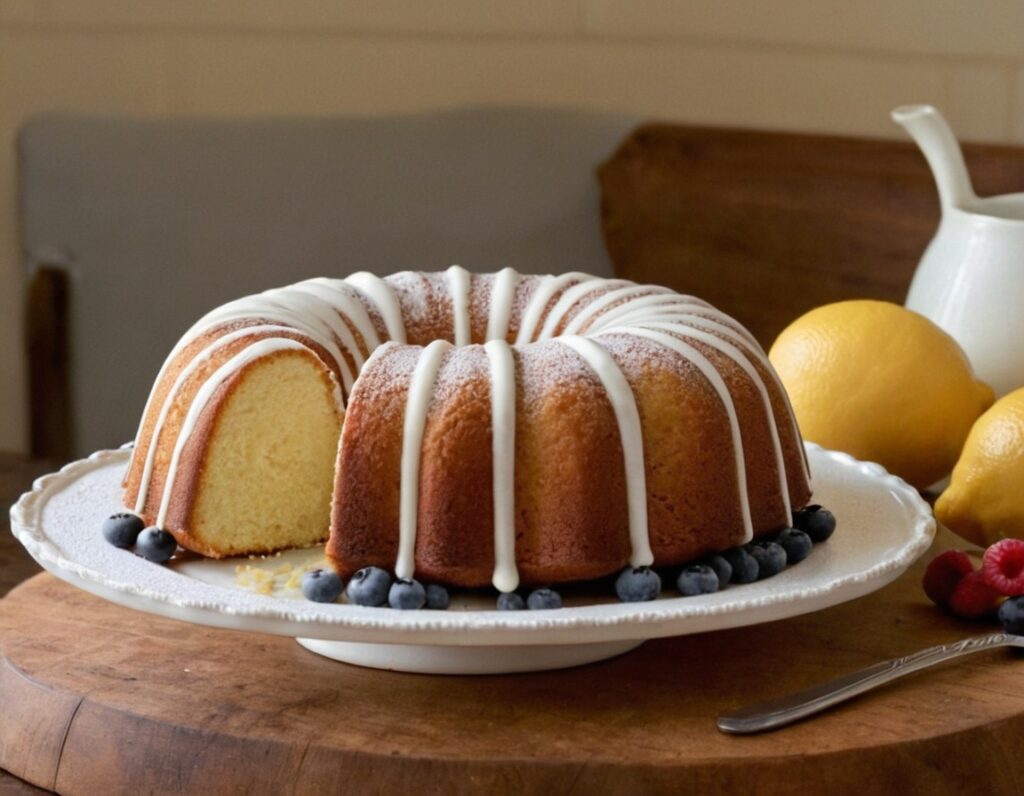
Serving and Storage Tips
One of the best things about buttermilk pound cake is its staying power. Not only does it taste fantastic fresh out of the oven, but it also holds up well over time, making it ideal for make-ahead desserts or leftovers that taste even better the next day. Here’s how to get the most out of your cake when it comes to serving and storing.
Serving Suggestions:
- Serve at Room Temperature: Pound cake is at its best when served at room temperature. This allows the flavors and texture to shine. Simply slice and serve as-is for an everyday treat.
- Dress It Up: For special occasions, elevate your slices with toppings like:
- A dusting of powdered sugar
- A dollop of whipped cream
- A drizzle of lemon or vanilla glaze
- Fresh berries, especially strawberries or blueberries
- A scoop of vanilla ice cream on the side
- Perfect with Beverages: Buttermilk pound cake pairs wonderfully with hot beverages such as coffee, tea, or even hot cocoa. For a summer treat, serve with iced coffee or sweet tea for a classic Southern touch.
- Transform It: You can also repurpose leftover pound cake into other desserts:
- Trifles: Layer cubes of cake with pudding and fruit.
- French Toast: Slice thickly and dip in egg mixture for a breakfast treat.
- Parfaits: Add whipped cream and fruit in layers for a no-bake dessert.
Storage Instructions:
At Room Temperature:
Store the cooled cake in an airtight container or wrap it tightly in plastic wrap. It will stay fresh for up to 3–4 days at room temperature. Avoid storing it in the fridge unless necessary, as refrigeration can dry out the crumb.
In the Refrigerator:
If your kitchen is warm or humid, you can refrigerate the cake. Wrap it tightly to prevent it from absorbing fridge odors. Allow it to come to room temperature before serving for the best texture and flavor.
In the Freezer:
Pound cake freezes beautifully. Wrap the cake (whole or sliced) in plastic wrap, then again in aluminum foil or place it in a freezer-safe bag. It will keep for up to 3 months. To thaw, let it sit at room temperature for several hours or overnight in the refrigerator.
Reheating Tips:
While not necessary, you can warm slices briefly in the microwave (10–15 seconds) or in a toaster oven. This enhances the aroma and softens the texture, especially if it’s a few days old.
With the right storage techniques, your buttermilk pound cake will remain just as moist and delicious days after baking as it was on day one.
Mistakes to Avoid
Even though a buttermilk pound cake is one of the simpler cakes to make in terms of ingredients and process, it’s easy to make a few common mistakes that can affect the final outcome. Whether you’re a beginner or a seasoned baker, understanding what pitfalls to avoid is key to mastering this classic cake. Below are some of the most frequent mistakes and how to steer clear of them to ensure your cake turns out moist, flavorful, and perfectly baked every time.
1. Using Cold Ingredients
One of the most common baking mistakes is using butter, eggs, or buttermilk straight from the fridge. Cold ingredients don’t emulsify as well as room-temperature ones. When the butter is too cold, it won’t cream properly with the sugar, which is crucial for building air into the batter. Likewise, cold eggs can cause the batter to separate. Always let your ingredients sit out until they come to room temperature—about 30 minutes before baking.
2. Overmixing the Batter
Once you begin adding the dry ingredients to the wet mixture, you should mix just until combined. Overmixing develops the gluten in the flour too much, leading to a dense and rubbery texture. To avoid this, use a gentle hand or the low setting on your mixer and stop as soon as there are no visible streaks of flour.
3. Incorrect Measuring
Precision is vital in baking. Scooping flour directly from the bag or container with your measuring cup can lead to excess flour, making your cake dry. Instead, spoon the flour into your measuring cup and level it off with a knife. Also, make sure you use proper measuring tools—dry measuring cups for dry ingredients and liquid measuring cups for liquids.
4. Skipping the Sifting
It may seem like an unnecessary step, but sifting the flour removes lumps and incorporates air, which helps the cake rise more evenly. Sifting also ensures your leavening agents, like baking soda and salt, are well distributed.
5. Not Prepping the Pan Properly
Because pound cake has a dense, buttery batter, it’s more likely to stick. Grease and flour your pan thoroughly, getting into every crevice if using a bundt pan. Failing to do so could result in a broken cake that sticks to the sides or bottom.
6. Baking at the Wrong Temperature
Baking at too high or too low a temperature can lead to an undercooked center or a crust that’s too dark. Always preheat your oven and consider using an oven thermometer to ensure accuracy. Even well-maintained ovens can run hot or cold.
7. Opening the Oven Door Too Often
It’s tempting to check on your cake, but opening the oven door too frequently lets heat escape and can cause your cake to sink. Wait until at least 45–50 minutes into baking before doing a quick toothpick test for doneness.
8. Not Allowing It to Cool Properly
Removing the cake from the pan too early can make it crumble, while letting it cool completely in the pan can trap moisture and cause sogginess. Let it rest for about 10–15 minutes before transferring to a wire rack to cool fully.
Avoiding these mistakes can make the difference between a decent cake and a spectacular one. It’s all about understanding the science behind each step and approaching the process with care and attention.

Tips and Tricks
To elevate your buttermilk pound cake from delicious to downright unforgettable, it helps to know a few time-tested tricks and flavor-enhancing secrets. While this cake is known for its simplicity and rich flavor, even subtle tweaks can enhance the texture, moisture, and overall appeal. Below are some professional and home-baker-approved tips and tricks to ensure your cake turns out perfectly every time.
1. Use High-Quality Ingredients
Because pound cake has a short ingredient list, every item plays a crucial role in the final flavor. Use real unsalted butter, fresh eggs, and a good-quality vanilla extract. Avoid imitation vanilla if possible—it makes a noticeable difference.
2. Don’t Skip the Buttermilk
Buttermilk adds tang, tenderness, and moisture. If you don’t have any on hand, you can make a quick substitute by adding 1 tablespoon of lemon juice or white vinegar to 1 cup of whole milk. Let it sit for 5–10 minutes until it curdles slightly.
3. Add a Citrus Twist
For a refreshing variation, add 1 tablespoon of lemon or orange zest to the batter. This brightens the flavor and pairs beautifully with the richness of the cake.
4. Use Cake Flour for a Lighter Texture
Although all-purpose flour works just fine, using cake flour results in a more tender crumb. You can substitute by removing 2 tablespoons of flour per cup of all-purpose flour and replacing it with 2 tablespoons of cornstarch.
5. Let the Cake Rest
While you may be eager to dig in, letting the pound cake sit overnight (wrapped and at room temperature) actually improves the flavor and moisture distribution. It’s one of those cakes that taste even better the next day.
6. Glazing for Extra Flair
A simple glaze made with powdered sugar and milk or lemon juice adds elegance and sweetness. You can drizzle it over a cooled cake or let it soak into a warm one for added moisture.
7. Make it Mini
Instead of one large bundt or loaf, consider making mini pound cakes in muffin tins or mini loaf pans. These are perfect for gifting, parties, or portion control.
8. Check for Doneness Early
Oven times can vary, so begin checking for doneness with a toothpick around the 55-minute mark. The toothpick should come out clean or with a few moist crumbs—never wet batter.
9. Store with a Slice of Bread
To prevent the cake from drying out, place a slice of bread in the storage container. The bread will absorb any excess air moisture, keeping your cake softer for longer.
10. Freeze in Portions
If you plan to freeze the cake, consider slicing it first and wrapping each slice individually. This way, you can grab one piece at a time for quick snacks or dessert.
By incorporating these tips into your baking process, you’ll not only master the classic buttermilk pound cake—you’ll turn it into a signature treat that your friends and family will request again and again.
Suggestions
The beauty of a buttermilk pound cake lies in its versatility. Whether you want to keep it simple and classic or dress it up for special occasions, there are countless ways to enjoy and customize this timeless dessert. Here are some creative suggestions to inspire you.
Flavor Variations
While the classic vanilla buttermilk pound cake is beloved for its simplicity, you can experiment with different flavors to suit your preferences:
- Citrus Infusion: Add lemon, lime, or orange zest to the batter for a bright, zesty twist. A lemon glaze made from powdered sugar and fresh lemon juice can enhance this flavor even more.
- Spiced Pound Cake: Incorporate warm spices like cinnamon, nutmeg, and ginger into the dry ingredients. This creates a cozy cake perfect for fall and winter gatherings.
- Chocolate Swirl: Fold in melted dark chocolate or cocoa powder to half of the batter, then swirl it into the plain batter before baking for a marble effect.
- Berry Mix: Fold fresh or frozen berries, such as blueberries or raspberries, into the batter just before baking for bursts of juicy sweetness.
Serving Ideas
Transform your pound cake into a full dessert experience:
- Layered Cake: Slice the pound cake horizontally and layer it with whipped cream and fresh fruits like strawberries, peaches, or cherries for a quick and easy layered cake.
- Trifle: Cube the cake and layer it in a glass dish with custard, fruit, and whipped cream for a stunning and delicious trifle.
- Ice Cream Sandwiches: Slice the cake into squares and sandwich your favorite ice cream between two pieces for a decadent summer treat.
- French Toast: Use leftover slices to make pound cake French toast. Dip slices in an egg mixture and cook on a griddle for a rich breakfast.
Occasions to Serve
- Holiday Gatherings: The dense, buttery nature of pound cake makes it a comforting treat for Thanksgiving, Christmas, or Easter.
- Afternoon Tea: Serve slices with tea or coffee for an elegant afternoon snack.
- Birthdays and Celebrations: Dress it up with frosting, fresh flowers, or a glaze to create a simple but stunning birthday cake.
- Gift Giving: Pound cake stores well and makes a wonderful homemade gift wrapped with a ribbon and a handwritten note.
By experimenting with these suggestions, you’ll find that buttermilk pound cake can suit nearly any occasion or mood — from casual weekday snacks to sophisticated celebrations.
FAQ
Q1: Can I substitute buttermilk with something else?
Yes! If you don’t have buttermilk on hand, you can make a quick substitute by adding 1 tablespoon of lemon juice or white vinegar to 1 cup of whole milk. Let it sit for 5-10 minutes until it curdles slightly, then use it as a 1:1 replacement in the recipe.
Q2: Why is my pound cake dense or heavy?
Dense pound cake can result from overmixing the batter, using cold ingredients, or inaccurately measuring flour. To avoid this, use room temperature ingredients, mix gently after adding flour, and spoon and level your flour when measuring.
Q3: How do I store leftover pound cake?
Store the cooled cake in an airtight container at room temperature for up to 3-4 days. It can also be refrigerated (wrapped tightly) or frozen for longer storage. Thaw frozen slices at room temperature before serving.
Q4: Can I make this cake gluten-free?
You can substitute all-purpose flour with a gluten-free flour blend designed for baking. Make sure the blend contains xanthan gum or another binder to mimic the texture of gluten.
Q5: Can I bake this in a different pan?
Yes, you can bake the batter in loaf pans, bundt pans, or even cupcakes. Just adjust the baking time accordingly: loaf pans typically take about 55-65 minutes, while cupcakes bake in about 18-22 minutes.
Q6: What can I use instead of vanilla extract?
You can substitute vanilla extract with vanilla bean paste or almond extract for a different flavor twist. Use half the amount of almond extract, as it is stronger.
Q7: How do I know when the cake is done?
Insert a toothpick or cake tester into the center of the cake. If it comes out clean or with a few moist crumbs (not wet batter), the cake is done. Also, the cake will start to pull away slightly from the pan edges.
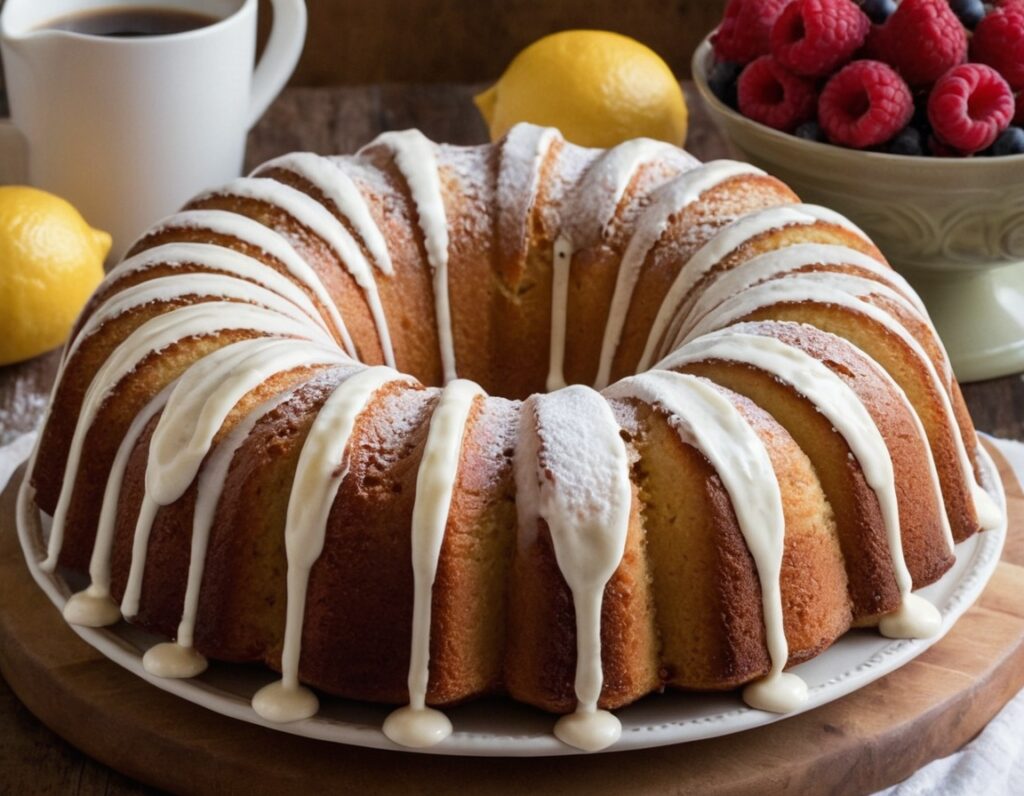
Conclusion
The buttermilk pound cake is a timeless classic that never goes out of style. Its rich, buttery flavor combined with the subtle tang of buttermilk creates a moist and tender crumb that’s perfect for nearly any occasion. Whether you’re a beginner baker or someone who’s mastered countless recipes, this cake is a reliable favorite that impresses every time.
What makes this recipe so special is its simplicity—using just a handful of everyday ingredients to create a dessert that tastes like it took hours of effort. With the right techniques, avoiding common mistakes, and a few handy tips, you’ll be able to bake a cake that’s moist, flavorful, and beautifully textured every time you make it. The versatility of the buttermilk pound cake also means you can customize it to your liking by adding flavors like citrus zest, spices, or chocolate, or by serving it with fresh fruits, whipped cream, or even as a base for other desserts.
Remember, baking is both an art and a science. Taking your time, measuring ingredients accurately, and treating your cake batter with care will ensure your pound cake comes out perfect. Don’t be afraid to experiment and make the recipe your own—after all, some of the best culinary creations come from a little creativity.
Whether you’re baking it for a holiday celebration, a casual afternoon tea, or simply to satisfy a sweet craving, this buttermilk pound cake is sure to delight your taste buds and those of your friends and family. So preheat your oven, gather your ingredients, and get ready to enjoy a slice of pure comfort in every bite.
Happy baking!

